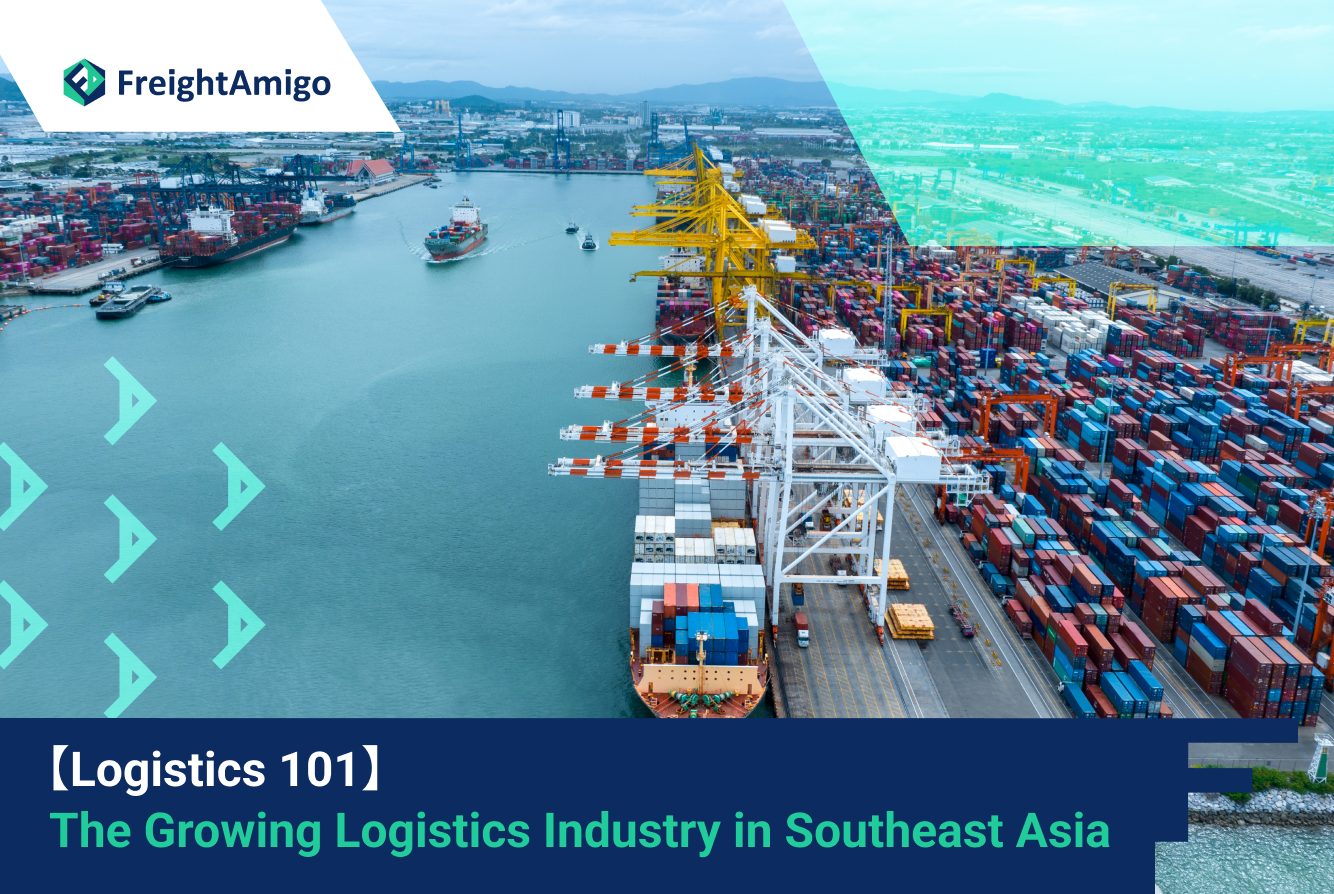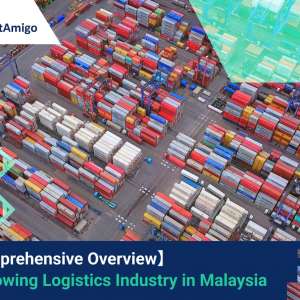Southeast Asia is experiencing a significant boom in its logistics industry, driven by various factors such as international trade, e-commerce growth, infrastructure development, and the migration of manufacturing. This article explores the key drivers behind the growth of the logistics sector in Southeast Asia and the challenges that need to be addressed. It also highlights the role of technology in transforming the logistics landscape and provides insights into the future of the industry.
Author Name:Tiffany Lee – Marketing Analyst at FreightAmigo
Want To Compare The Best Express, Air Freight, Sea Freight, Rail Freight & Trucking Rates So As To Have Better Control On Cost?
Introduction
Southeast Asia has emerged as a global logistics hub, attracting investments and experiencing rapid growth in its logistics sector. The region’s favorable macroeconomic conditions, including fast-growing economies, population growth, urbanization, and a thriving middle class, have contributed to its logistics boom.
International Trade and Investment
The growth of Southeast Asia’s logistics industry is closely linked to international trade and investment. The region’s receptiveness to trade, facilitated by free trade agreements and the absence of customs duties, has attracted numerous multi-industry corporations. This has led to an increased demand for better logistics and third-party logistics (3PL) services.
Rapid Growth of E-commerce
The rise of e-commerce has been a significant driver of the logistics industry in Southeast Asia. The increasing availability of the internet and smartphone adoption has fueled the growth of e-commerce markets in the region. With a large population and a growing middle class, Southeast Asia has become a lucrative market for online retailers. The logistics sector is essential in supporting the delivery of goods purchased online.
Infrastructure Development and Urbanization
Rapid urbanization and infrastructure development projects in Southeast Asia have contributed to the growth of the logistics industry. Cross-border transportation corridors, as outlined in the ASEAN Master Plan on Connectivity, aim to improve the movement of goods and labor across the region. The growth of secondary and tertiary cities has also increased the demand for efficient transport solutions and mobility services.
Challenges in Southeast Asia’s Logistics
Despite its growth, the logistics industry in Southeast Asia faces several challenges that need to be addressed. Inadequate infrastructure, including poor road networks and limited air transportation, hinders efficient logistics operations. Fragmentation in the industry, arising from diverse cultures, languages, and regulations across countries, poses challenges for logistics companies in establishing seamless networks. There is also a shortage of skilled labor in areas such as supply chain management and technology. Cybersecurity and environmental sustainability are additional concerns that need attention.
Transformation through Technology
Technology is playing a crucial role in transforming the logistics industry in Southeast Asia. Companies are using cloud-based logistics and freight software, route optimization, predictive alerts, and blockchain-powered solutions to optimize supply chains. Artificial intelligence (AI) is being utilized for forward and reverse logistics, while accounting solutions are streamlining operations. Technology adoption is crucial for the development of the supply chain industry in the region.
Southeast Asia Logistics Leaders
Singapore is leading the way in terms of logistics infrastructure, acting as a bonded warehouse and cross-dock location. However, other countries in the region, such as Malaysia and Indonesia, are also becoming attractive destinations for logistics activities. The competitiveness of Indonesia is increasing, and Malaysia has become a preferred destination for cross-docking and bonded warehousing. The Philippines, Thailand, and Vietnam are also improving their roads and regulations to support logistics growth.
Social Commerce and Changing Consumer Behavior
The growing importance of social commerce is shaping consumer behavior in Southeast Asia. Each country in the region has its unique social commerce preferences, with consumers relying on these platforms for online shopping. The rise of payment wallets has made transactions easier. Performance monitoring and delivery-route optimization systems are becoming necessary to meet consumer demands and enhance logistics operations.
Focus on Warehouses and Fulfillment
The focus on warehouses and fulfillment centers has intensified as speed and convenience become top priorities in logistics. Traditional centralized warehouses are being replaced by hub-and-spoke arrangements, allowing companies to be closer to customers. E-commerce players are investing in their logistics operations to offer a better customer experience. The development of modern, eco-friendly facilities and the provision of value-added services are shaping the future of warehousing in Southeast Asia.
Future Growth and Potential
The logistics industry in Southeast Asia is poised for further growth and development. The region’s strong economic fundamentals, increasing consumer demand, and ongoing infrastructure projects create a favorable environment for logistics companies. As Southeast Asia continues to attract investments and witness technological advancements, the logistics sector will play a vital role in facilitating trade and economic growth.
Conclusion
Southeast Asia’s logistics industry has experienced significant growth due to factors such as international trade, e-commerce, infrastructure development, and manufacturing migration. Despite challenges in infrastructure, fragmentation, talent shortage, cybersecurity, and sustainability, the industry is transforming through technology adoption. Countries like Singapore, Malaysia, and Indonesia are emerging as logistics leaders, while social commerce and changing consumer behavior are shaping the industry. The focus on warehouses and fulfillment centers, along with the potential for future growth, makes Southeast Asia an attractive destination for logistics investments.
There Are Different Options For Cargo Transportation. If You Want To Choose The Most Convenient And Suitable Solution, It Is Best To Have The Full Support Of Logistics Experts! If You Are Planning To Ship Goods Overseas, Please Go To The FreightAmigo Page For Inquiries.
===
Read More:
【Navigating the Asian Market】Maximising Profit with Strategic Imports from Southeast Asia
【An In-Depth Analysis】Export Trends and Challenges in Southeast Asia
Explore the thriving trade market Southeast Asia
===
If you have any inquiries on logistics/supply chain, feel free to contact FreightAmigo now:
Chat with us online OR
Phone : +852 28121686
WhatsApp: +852 27467829









































